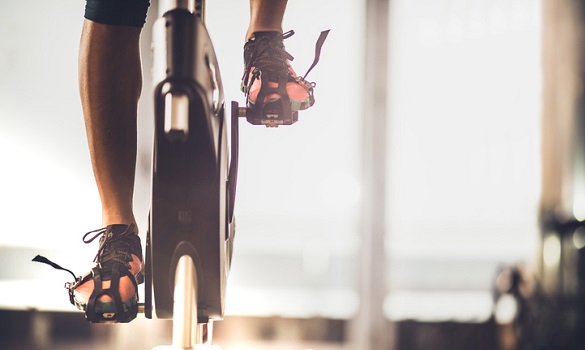
The popularity of spin cycling, also called spinning, has resulted in a surge of young patients suffering from exertional rhabdomyolysis, or a breakdown of muscle from extreme physical exertion.
Khoo Teck Puat Hospital said it is seeing an increasing number of cases, with 27 recorded in the first four months of this year. Three doctors from Changi General Hospital’s (CGH) emergency department did a study after they saw five such cases in March last year. Other hospitals too are reporting more cases of exertional rhabdomyolysis, a potentially deadly syndrome. The Singapore General Hospital had an average of four cases a month last year. This has shot up to 10 cases a month this year, but its spokesman said: "We are not able to attribute the condition specifically to spin cycling, as other exercises can potentially cause the same problem too."
The CGH study released in a letter in the May edition of the Annals, the journal of the Academy of Medicine Singapore, found all five patients were non-smokers aged 23 to 26 years, with no significant health problems. They had gone to the emergency department two to four days after their spin class, with pain in both thighs. Four had also passed brown or dark urine. All were hospitalized and given intravenous fluids. They stayed an average of 2.4 days and recovered.
Rhabdomyolysis is potentially life-threatening. When muscle fibres break down, they leak into the bloodstream and "may cause serious complications including kidney failure or even death", said Dr Rupeng Mong, a senior consultant in the department and one of the three letter writers.
He said: "We noticed there was an increasing number of patients with spin-induced rhabdomyolysis. We continued to see such cases after March 2020."
Spinning uses a specialized stationary bicycle. The letter said: "It is often touted as an optimal aerobic sport, and a quick solution to increase one’s metabolic rate and relieve stress." It is a high-intensity workout, burning 300-500 calories in a vigorous 30-minute session. The letter said there is documentation to show that just 15minutes into a spinning session for an untrained person is enough to cause rhabdomyolysis.
The CGH patients, two men and three women, did spinning as a group with an instructor. Four were attending their first spin class, and one, her second class. The session lasted 45 minutes.
The doctors speculated that intensity may be higher in spinning than outdoor cycling, as there is no need to stop for traffic, avoid obstacles or slow down for turns. It is often done in air-conditioned comfort with fast tempo music, videos and dimmed lights that push them to exercise harder.
The doctors said: "They are also encouraged to ‘ride with the pack’ and teamwork is often emphasized. It is possible that a combination of these conditions will push a newcomer to go beyond his or her physical limit."
Dr Mong said people should stop the exercise and seek medical help if they get heat injuries (giddiness, cramps in arms and legs, heartache), heart conditions (chest pain, severe breathlessness), or musculoskeletal injuries (sharp or severe pain, pain associated with swelling). If treated early, major complications such as kidney failure can be avoided, although some people may have lingering weakness and pain in their muscles.
The doctors said many cases may also have been missed. One of the five patients studied had been treated for urinary tract infection as there was blood in her urine, before she sought treatment at the hospital.
The CGH doctors suggested that spinning classes start with lower levels of intensity, especially for those who have led sedentary lifestyles – although two of the five patients did aerobic exercises three or four times a week. Dr Mong said no matter what the exercise, people "should start with small amounts of exercise and gradually increase the frequency, intensity and duration of physical activity over time" to avoid any exercise-induced injuries.
Participants should also be warned against overexerting m and about preventive measures such as warming up and having enough fluids.
Source: The Straits Times
Reproduced with permission.
|||
Tags:
;
;
;
;
News Article;
;
SingHealth Duke-NUS Academic Medical Centre;Academic Medicine Research Institute;
;
The Straits Times;
;
;
;
;
Research
